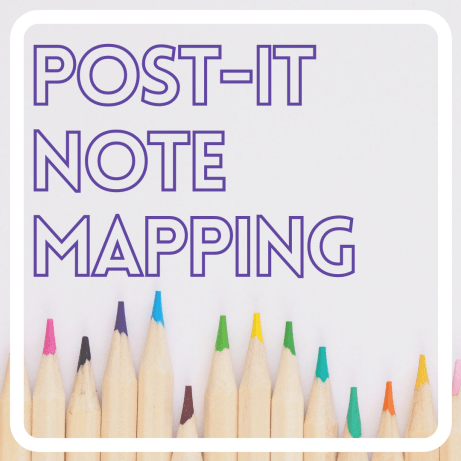This post can be downloaded in the Network Mapping Module : Post-It Note Mapping, along with 5 different processes for mapping your networks.

Google Drive has a new option called Jamboard that is great for introducing people to network mapping and can be done collaboratively during a zoom session.
When you open your Google Drive go down to “More” then select Google Jamboard.
Name your Jamboard and go over to Share in the upper right hand corner and change to “anyone with the link can edit” You will want to copy this link into the zoom chat when you are doing the mapping in a zoom session.
You may want to make a legend for your map. Click on the postit note icon on the left. Write in the type of organization you want that color to represent. Unfortunately, there are only five color choices so you may need to combine some categories. Then I made these squares smaller.
Now you are ready to start mapping.
Put the link to the map in the chat and encourage everyone to open (and shrink their zoom window). This will only work with a small group (though you could offer different links and have each breakout group do a map). Have the first person click on the PostIt note icon and click on the color that represents their type of organization. They should put their note in the middle of the map. Then have the next person add a PostIt and draw a line to the first person (adding an arrow to show that they know that person) if they have worked with the person. Then have the rest of the group, one at a time, add their note and make connections to others they have worked with. The first people may need to add lines and arrow points. The map should look like this:
First, have the group consider how well connected they are as a group. They may not know others in the group or may know them but have not worked with them. Encourage them to reach out in the chat to those they don’t know well to set up a virtual coffee. Or later in the session, the facilitators could set up breakout rooms
Then have the group consider “Who is missing?” If they are missing a particular type of organization, they can brainstorm names of people who are from that type of organization. If they are missing local residents, then they can add names. If they do not know specific names, that can be a task for the group to work on.
Another way you can use this is to cluster people by interests. This is especially usual when your group is between 10 and 30 people. Ask people to add an interest after their name. You may want to brainstorm 3–6 topics first for people to choose from. Then cluster them and assign to a breakout room where they can discuss their interests more deeply.
June Holley has been weaving economic and community networks for more than 35 years. In 1981 she discovered complexity science and became intrigued with the process of transformation. How could communities change in ways that would make them good places for everyone?
Originally published at https://networkweaver.com

